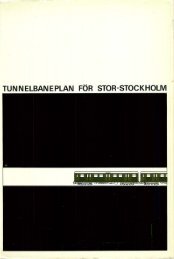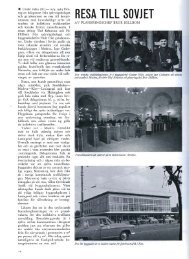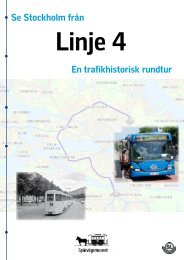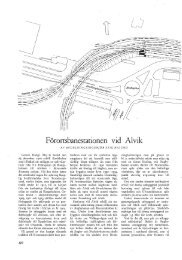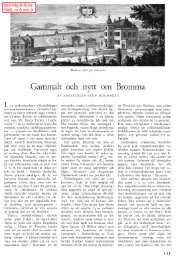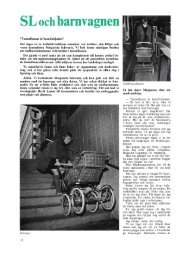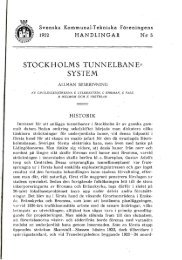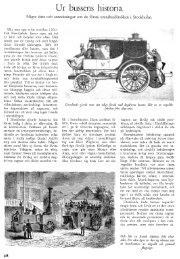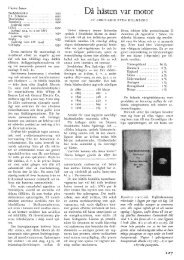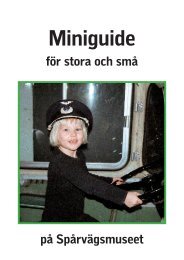Reliability of Stockholm Subway - Index of
Reliability of Stockholm Subway - Index of
Reliability of Stockholm Subway - Index of
Create successful ePaper yourself
Turn your PDF publications into a flip-book with our unique Google optimized e-Paper software.
The charts on figures 4.7 and 4.8 show that there is a common tendency at the chosen<br />
station set. Number <strong>of</strong> commuters increases considerably after 6:00, reaches its peak<br />
at 8:00 and declines rapidly until 9:00. Then it continues to slightly decrease until<br />
10:00. reaching its lowest value during the daytime. After that downfall number <strong>of</strong><br />
passenger entering and leaving the terminals keeps on insignificantly growing until<br />
14:00. At 14:00 the growth changes its character. The slopes get steeper. The graphs<br />
reach their evening peaks around 17:00. After that the number <strong>of</strong> passengers<br />
dramatically decreases until 19:00. Analyzing that variation <strong>of</strong> passenger flow at the<br />
presented stations one can identify three periods during the daytime, which will be<br />
interesting for reliability analysis: morning peak hour 6:30 – 9:00, midday <strong>of</strong>f-peak<br />
9:00 – 14:30, evening peak hour 14:30 – 19:00.<br />
4.2.4 Signaling system<br />
In spring 1999 the old signaling system <strong>of</strong> the Green Line was completely replaced<br />
with the new one produced by Siemens. The new safety system is continuous with the<br />
automatic train control (ATC) feature. Continuous means that the signal continually is<br />
sent by the system through the rails wherever the train is.<br />
The signal system was constructed with the following technical specification: the train<br />
length is three stock cars <strong>of</strong> C20 around 140 meters, maximum speed is 70 km/h and<br />
50 km/h at the platforms, maximum acceleration/deceleration is 1,1 m/s 2 , and<br />
designed headway <strong>of</strong> 90 seconds between trains during ordinary transport service.<br />
40




